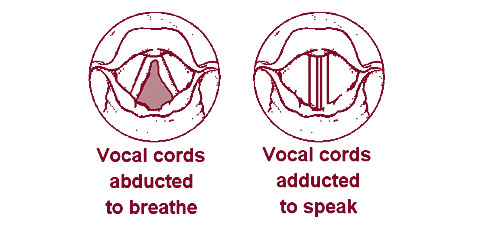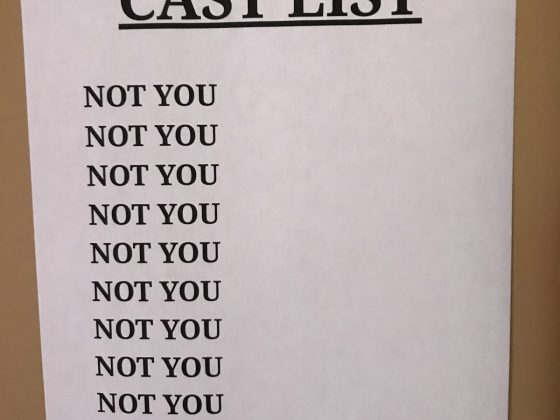Ah, winter . . . ‘Tis the season for colds, coughs, and flus galore. These little bugs can do a number on our voices, leading to swollen vocal cords and discomfort when phonating. Whether you’ve been suffering from laryngitis or from a cold, or have vocal fatigue from the classic combo of overworking and lack of sleep, it is so important to take the proper steps for recovery to get you back to full vocal health.
Disclaimer – This blog post does not replace the advice of a medical professional. If you’re suffering from prolonged or recurring vocal injury, get thee to an ENT!
Taking Care of the Cords
As performers, we all have our own special remedies that we turn to at the first sign of vocal discomfort. However, no amount of menthol lozenges or grandma’s chicken noodle soup can replace the tried-and-true recovery methods of rest and time. If you’re in the first stages of vocal recovery, these are the steps for getting your voice back from its swollen state.

Hydration
Hydrated vocal cords are happy vocal cords! In addition to the H2O and copious amounts of lemon-ginger-honey tea that singers consume, steaming is a great way to quickly get hydration to your cords. This can be done with hot steam (a vocal steamer is ideal, but even a hot shower will do the trick!) or a nebulizer.
Rest
Nothing sorts a voice out faster than rest. Both through physical rest (this is your permission to take as many naps as you like!) as well as vocal rest. Make sure you’re limiting the amount of time talking in loud environments and don’t push yourself if you begin to feel vocally tired when speaking or singing.
Warm Up and Cool Down
Although you want to have lots of rest, it is possible to do too much rest. Just like recovering from a sports injury, you still need to move the muscle to promote healing and rebuild strength. The most important aspect of returning to vocalizing is your warmup and cool down. Gentle warmups before any kind of vocalization (singing or speaking) will prepare your vocal cords for phonation and a good cool down at the end of the day will help to relax your muscles. Below is a great cool down to do soothe your tired cords:
Get a Professional Opinion
If you find that you’re consistently experiencing vocal fatigue, laryngitis, or prolonged vocal issues (anything lasting over 2 weeks), it is time to get the professionals involved.
- ENT (Ear, Nose, and Throat) doctors will be able to find out if there is an underlying medical issue such as nodes, polyps, or hemorrhages.
- Speech therapists can give you tools to strengthen your speaking voice and assess if there’s any unhelpful vocal habits that you may have.
- A singing voice specialist can design a rehabilitation program for an injured voice.
Ask your doctor or members in your arts community for recommendations on the best professionals specializing in vocal rehabilitation for singers in your area.
Road to Recovery
Once that swelling has gone down and you’ve been given the “all clear” to get back on your vocal practice, these are some helpful tips for restarting your singing practice!
Don’t Expect Too Much Too Soon
Ideally, you want to wait until all swelling or vocal issues are fully healed before restarting your vocal practice. Singing on swollen folds can prolong your recovery or even re-injure the voice. It’s very common to lose access to the upper notes of your range during vocal injury. Don’t worry if the first few times back singing, you don’t have access to the full range of notes that you’re used to having. They aren’t gone forever! With consistent, gentle practice, those notes will come back (and probably quicker than you think!)
Easy Does It
As you’re returning to your vocal practice, gentle, light vocal exercise for short amounts of time throughout the day is the way forward. Jumping straight back into an hour-long practice session will only lead to more vocal fatigue. Just like training muscles in the gym, you need to gradually increase the intensity so you can build back up to being in vocal shape. Below are some very effective exercises for building up your voice after injury:
SOVT exercises
SOVT (Semi Occluded Vocal Tract) exercises is essentially a really fancy way to say “mouth partially closed” exercises. The main benefit is that when the mouth is partially closed, the vocal folds vibrate with ease and less effort due to back pressure reflected at the lips. One of the best exercises using this method involves a straw. Simply put your mouth around the straw like you normally would, and then vocalize while blowing through the straw. Lots of people will do this while the straw is in water because it’s a great way to visually see your air flow (and blowing bubbles in water is good silly fun!). There are a wide range of SOVT straw exercises; check out the video below for some great examples!
Sirens
Sirens are an incredibly useful tool for any singer’s warmup. Using an “ng” sound (like the end of the word “sing”), start from the bottom of your range, slide up to the top, and slide back down. Sirens are a quiet and very gentle way to check in with your vocal range. As you siren, you access the two basic vocal functions – contact in the vocal folds and movement of the larynx. The trick is to make sure that you don’t get louder as you move up and down the range – clear, quiet, consistent tones are what to aim for!
Don’t Neglect the Spoken Voice
Most performers are used to warming up their singing voice but can often forget to warm up their spoken voice. Especially when recovering from injury, it’s important to warm up before speaking as well as singing. A spoken voice warmup doesn’t need to be quite as thorough as a singing warmup – a couple of articulator exercises (lips, tongue, jaw), some breath work, a few sirens, and you’ll be good to go.
It can also be tempting to whisper or speak off-voice while recovering, but please try to avoid this as much as possible. Whispering tightens your already tense cords and does much more harm than good. Speak as normally as possible during the recovery process to encourage good vocal habits and relaxed cord movement.
Whole Body Experience
When rehabilitating the voice, we can become very focused on the vocal cord area. However, it is just as important to get our whole body involved in the recovery journey. We can keep a lot of tension in our jaw, tongue, and neck, which can impact our phonation. Incorporate tongue stretches, neck rolls, and jaw release work into your warmup to sort out any tension issues. If you’re looking for a place to start, follow along with the video below!
Lifestyle and diet can also have a big impact on recovery. Dust, dry air, caffeine, chemicals, alcohol, cigarettes, and acid foods can all act as irritants and cause additional issues for your cords. Limiting exposure to as many irritants as possible will only aid in recovery.
Finally, be patient and kind to yourself during this time. Recovering from vocal injury can be an extremely frustrating time, especially if you have an upcoming performance that you’re trying to prepare for. Allow yourself to take the time that you need to recover – no matter how long that may be. Listen to your body and protect your instrument! If you take your recovery seriously, you’ll be back to belting out your favorite tunes in no time.
















2 comments
Very interesting read I am dismayed my chords were damaged by whooping cough because Drs refused to believe I had it until the epidemic of it
Seen specialist my ins does not cover recovery so Drs care less that I am depressed as to being no longer able to sing
I once had an outstand voice I sang in professional setting now I am out of luck
I will try all you have written
thanks again
Anyone who is a professional level performer understands it is IMPERATIVE to study technique regularly with a professional level voice teacher throughout the entire course of their career. At minimum, this means a monthly lesson with a voice technician. You only have ONE voice. It must be correctly, healthily, and efficiently supported when either speaking or singing. Without your voice, you have no tools to show up for your job.